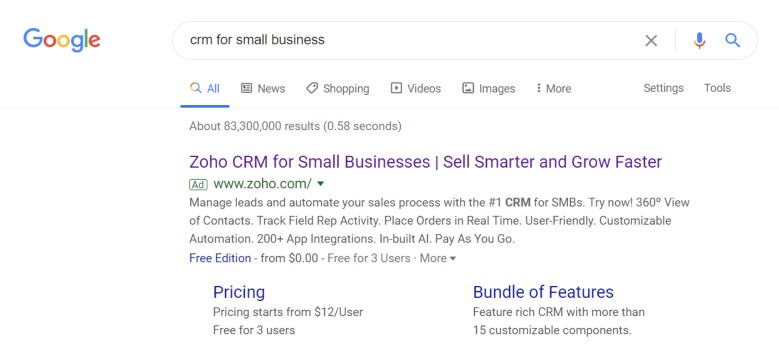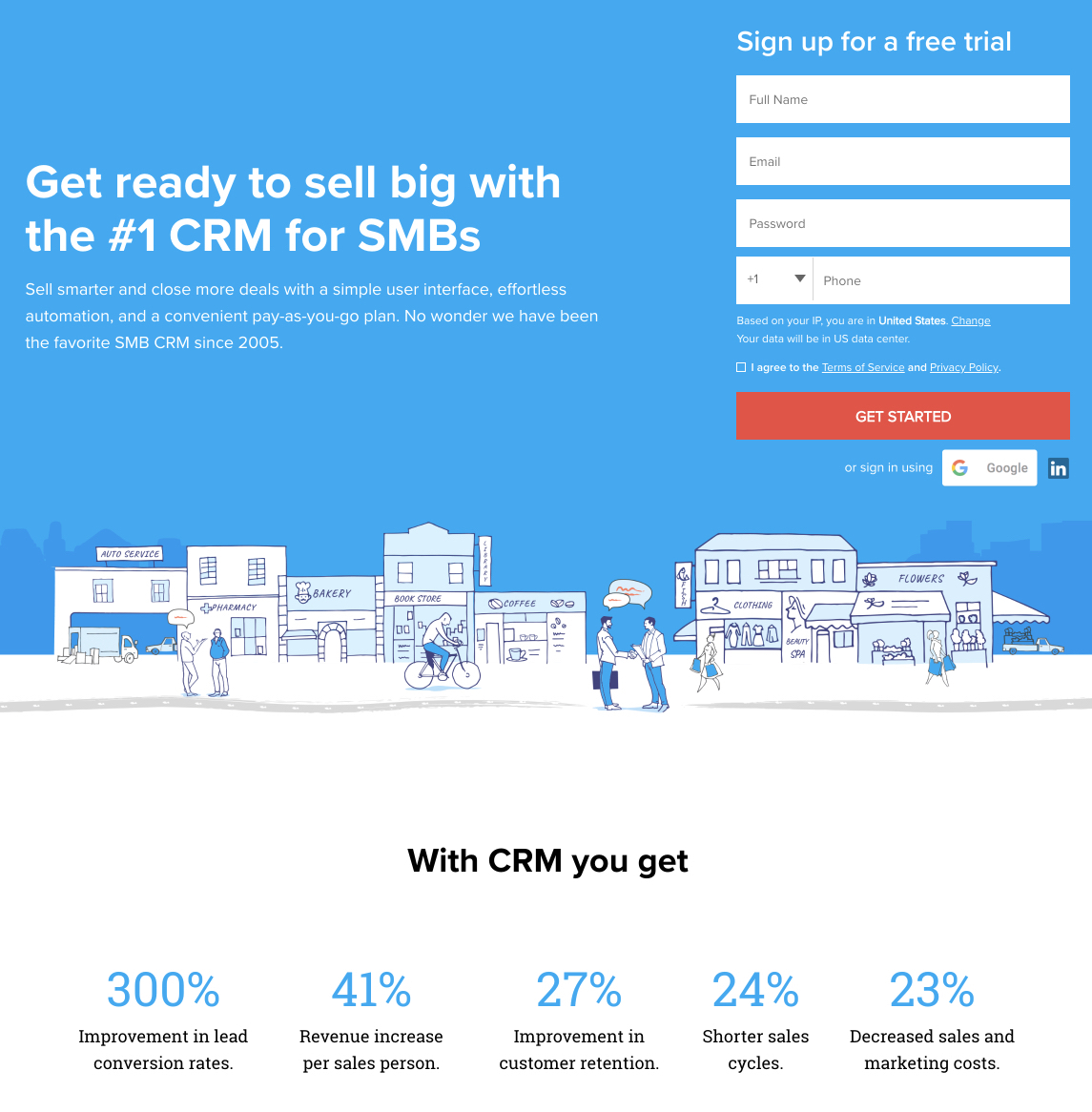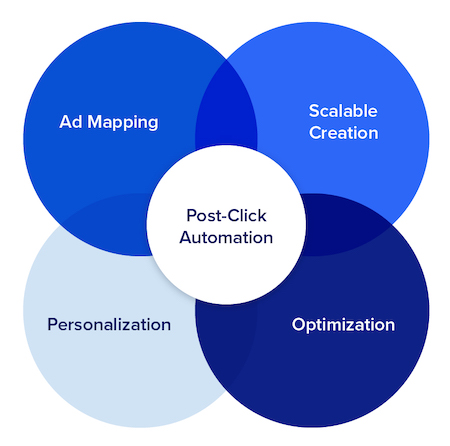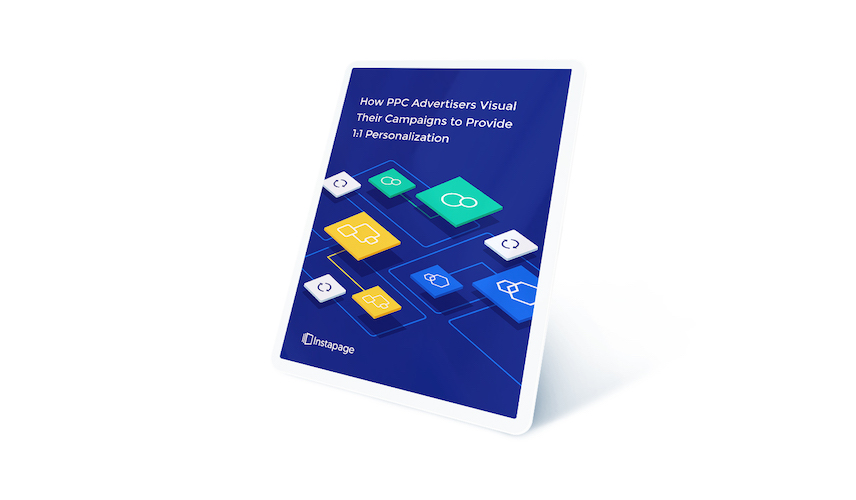If you’re an ROI-focused advertiser, your ads are highly personalized. They take into account location, device, traits, behaviors, and more. But when your audience clicks through them, what will they find?
A homepage? An “About” page?
If you’re focused on ROI, you know these aren’t effective. But what you may not realize is that even matching the message of your ad (headline, images, colors, etc.) to your landing page isn’t enough, either. Your customers expect more. And the only way to give it to them is with AdMap™, the tool for campaign visualization and tracking that advertisers have been waiting for.
New ebook for PPC advertisers
To learn how AdMap brings organization and seamlessly personalized experiences to your campaigns, claim the Instapage resource here:
Continue on to learn more about why the modern campaign demands a tool like AdMap.
What your customers want now
For a long time, experts have been imploring advertisers: Do not send your paid traffic anywhere other than a page dedicated to converting that traffic. A post-click landing page is your only option. And for it to be effective, it must match the message of the referring ad. If your search ad matches a user’s query “crm for small business,” with the “Zoho CRM for Small Businesses” in the title, like this:

Then, the corresponding post-click page’s headline should contain the words, “CRM for small businesses,” and the content should be tailored to small businesses, complete with copy that reflects the copy in the ad. Branded media should identify the page as belonging to Zoho, so that customers don’t worry they’ve been redirected to an unrelated web page. Here’s the page above the fold:

This is message match, and it’s the most basic form of maintaining relevance from the ad to the post-click landing page. In the age of hyper-relevance, however, customers need more than basic relevance. They need meaningful personalization. And there are many stats to prove it. Among them:
- On average 71% of consumers express some level of frustration when their shopping experience is impersonal.
- 44% of consumers say that they will likely become repeat buyers after a personalized shopping experience with a particular company.
- 31% of consumers say they wish their shopping experience was far more personalized than it currently is.
- 87% of consumers surveyed say that personally relevant branded content positively influences how they feel about a brand.
While these inform advertisers, they’re only particularly useful in the pre-click stage, where providing meaningful personalization is achievable at scale. Facebook, Google, and leading demand-side platforms empower users to create highly specific segments of audiences with countless targeting options, but when it comes to matching that personalization on the post-click landing page, they, and other technologies, fall short.
This creates a major problem. When you personalize in the pre-click stage, you have to personalize in the post-click stage. Otherwise, you deliver a mismatched user experience.
But without capable tools, the cost of personalizing the post-click landing page is too high. So, advertisers opt to deliver a mismatched user experience, thinking that half a personalized campaign is better than nothing.
Why it doesn’t have to be that way
It’s not so difficult to see why personalization is hard to deliver in the post-click stage. Building a post-click page isn’t as easy as creating an advertisement. There are far more elements to creating a page, more team members involved, and far fewer technologies to help teams create those pages at scale. When you need a personalized page for every personalized ad, the workload can seem impossible to overcome:
Building wireframes, collecting media, crafting personalized copy, editing, developing, publishing…
And it doesn’t end there. Beyond publishing, the job for advertisers is especially tough: There are tests to run, optimizations to make, personalization tactics to perfect.
Most teams visualize their campaign structure with spreadsheets, but tracking each page evolution manually is impossible when there’s a page for each advertisement.
These factors considered it’s easy to see why advertisers believe a half-personalized campaign is better than nothing.
What they don’t realize is there’s a better way.
AdMap™: The latest update to post-click automation
Landing page automation is a new class of software, which helps advertisers create personalized pages as easily as they create personalized ads.
Three pillars it’s founded on — Scalability, Personalization, and Optimization — solve all the problems that come with building a page for each ad, personalizing that page to make it hyper-relevant to the visitor, and improving the page to generate more conversions:

The fourth, Ad Mapping, solves all the problems with campaign visualization and tracking that PPC managers face after publishing. No more spreadsheets, no more inconsistent user experiences.
With AdMap:
Import your entire Google Ads account
Maintaining message match, design consistency, and effective personalization between ads and post-click landing pages is particularly difficult when campaigns change often. When ad targeting or creative is changed, it has to be reflected on the landing page.
Lacking adequate tools to accomplish this, though, advertisers turn to manual entry spreadsheets. They list ad groups in a column, landing page URLs in another, and refer back to the sheet when changes are made. But this is an inefficient way to maintain campaign uniformity. It’s too tedious when you’re creating a landing page for each audience, and it’s easy to make mistakes, which can end with inconsistent user experiences and lost revenue.
With AdMap, your entire Google Ads account structure can be imported so that you can visualize your entire campaign like never before. See ad groups, ads, and the landing pages attached to them. And whenever a change is made to either the ad or landing page, AdMap will remind you to update the rest of the campaign, so all your experiences remain equally matched.
Ensure your updates are always live
There are few things worse than updating a campaign and realizing hours, days, a week later, that the changes weren’t pushed live. It can mean the difference between a successful campaign and a failed one, effectively used budget or wasted ad dollars, ROI, or lost revenue.
That’s why AdMap comes with two-way sync. With this feature, you’ll be able to see all the changes you made to your campaigns before you set them live.
Before you push the changes live, two-way sync will list all the actions you’ve taken in a session. Then, you can either set those changes live, in bulk, or go back and edit to ensure your campaigns look and work the way they should. Reduce mistakes and wasted ROI to generate more revenue, more often.
Get an Instapage demo, including AdMap™
These are just two of five ways AdMap is changing the game for advertisers. Learn more from the new Instapage resource or see AdMap in action with an Instapage Enterprise demo.

See the Instapage Enterprise Plan in Action.
Demo includes AdMap™, Personalization, AMP,
Global Blocks, heatmaps & more.

